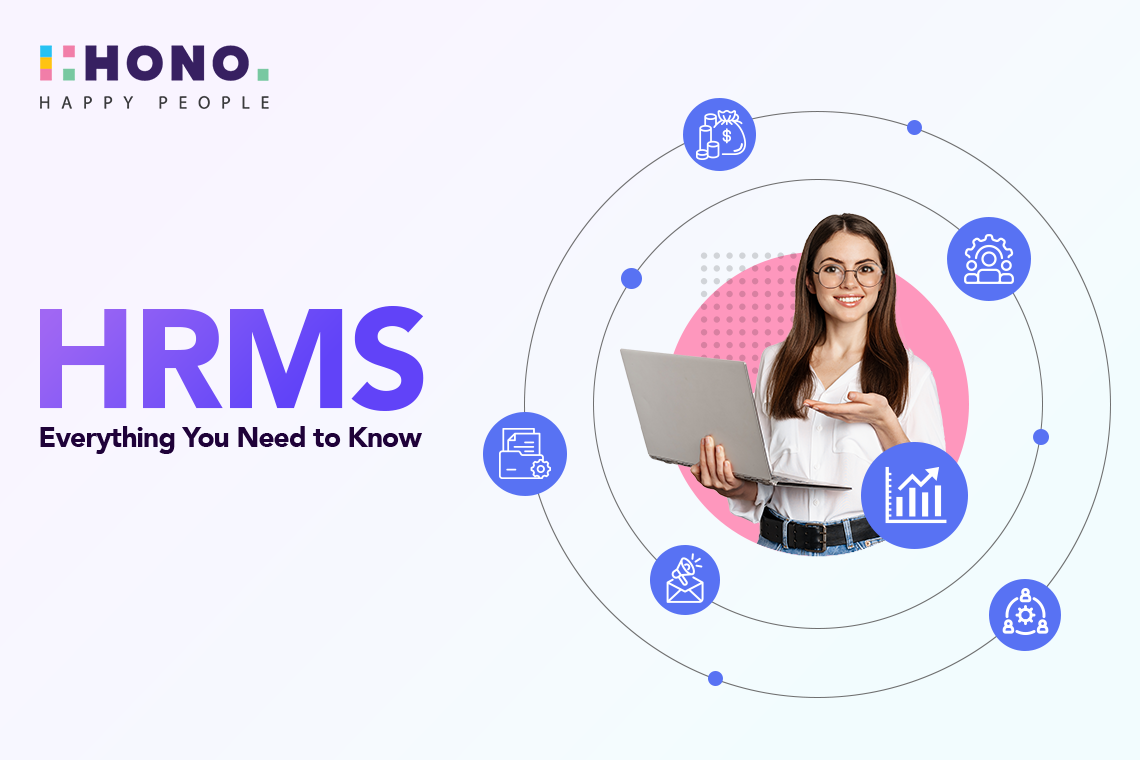Top HR Analytics Tools for 2024
The question of "What are HR analytics tools?" is increasingly answered by a range of innovative software solutions designed to empower HR professionals with data-driven insights. As we look ahead to 2024, selecting the right analytical tool for HR analytics is more critical than ever. Here are some of the top HR analytics tools that are set to shape the future of HR data analysis:
HONO: HONO is a versatile HR tool that streamlines various HR processes, from automated task management to employee self-service portals. It offers performance management modules, advanced analytics for informed decision-making, and seamless integration with other systems. Additionally, HONO efficiently handles payroll, attendance, document management, and recruitment processes. With mobile support and online self-service capabilities, HONO enhances HR efficiency, improves employee experience, and optimizes HR operations, making it a top choice for organizations in 2024.
Visier: This tool is at the forefront of workforce analytics and planning solutions. Visier assists HR professionals in making informed decisions for effective workforce planning and talent management. Its ability to provide deep insights into various HR metrics makes it one of the best HR analytics tools available. With its advanced HR analytics capabilities, Visier provides critical insights into workforce planning, talent acquisition, and employee engagement, aiding HR teams in strategic decision-making.
Tableau: Renowned for its data visualization capabilities, Tableau transforms complex HR data into interactive and shareable dashboards. This tool is essential for HR teams aiming to make their data more understandable and actionable.
Qlik: Offering robust data integration and analytics solutions, Qlik enables HR teams to merge multiple data sources for more comprehensive insights. This tool is vital for informed decision-making in HR analytics.
Power BI: As Microsoft's flagship business analytics tool, Power BI plays a crucial role in visualizing and sharing insights from HR data. It builds better understanding and collaboration within HR teams, making it a key tool for HR analytics.
SPSS: IBM's Statistical Package for the Social Sciences (SPSS) is a mainstay for statistical analysis in HR. It is particularly useful for analyzing complex HR data sets to uncover trends and patterns.
R: This programming language is widely used for statistical computing and graphics, offering advanced data analysis and visualization capabilities for HR professionals.
Python: Known for its simplicity and versatility, Python is increasingly popular in HR for various analytics tasks, including data cleaning, modeling, and visualization.
Excel: While not a specialized HR analytics tool, Excel continues to be a powerful resource for HR professionals for data analysis and reporting, especially when dealing with smaller datasets or quick analyses.
Plum: This AI-powered talent analytics solution helps HR professionals predict and measure the potential of candidates and employees, thereby enhancing talent management decisions.
As organizations strive to navigate the complexities of the modern workforce, these HR analytics tools offer valuable support in harnessing the power of HR data analytics.
Why to Integrate HR Analytics Tools into Your Business
The integration of HR analytics tools into your business is a critical step towards leveraging data for strategic decision-making. Understanding what HR analytics tools are and how to choose the right analytical tool for HR analytics is essential for this process. Here are some tips and strategies for selecting and integrating these tools effectively:
Tips for Selecting the Right HR Analytics Tools
Assess Your Needs: Before exploring the tools of HR analytics, identify the specific challenges and objectives of your HR department. This will help you select a tool that aligns with your organization's goals.
Consider Scalability: Choose HR analytics tools that can grow with your organization. The best HR analytics tools are those that can adapt to increasing data volumes and evolving business needs.
Evaluate User-Friendliness: Ensure that the tool you select is easy to use and understand. A user-friendly interface will encourage adoption among HR professionals and stakeholders.
Check for Integration Capabilities: The chosen HR data analytics tool should seamlessly integrate with your existing HR systems and databases to ensure a smooth flow of data.
Prioritize Data Security: Given the sensitive nature of HR data, select tools that offer robust security features to protect your data from unauthorized access and breaches.
What are the Strategies for Effectively Integrating HR Analytics Tools?
Develop a Clear Implementation Plan: Outline the steps for integrating the new tool into your HR processes, including timelines, responsibilities, and training requirements.
Build Collaboration: Encourage collaboration between HR professionals, IT teams, and other stakeholders to ensure a smooth integration and to address any technical challenges that may arise.
Provide Training and Support: Offer comprehensive training sessions to help HR staff understand how to use the new tools effectively. Ongoing support is also crucial for addressing any issues and ensuring optimal usage.
Start with Pilot Projects: Before a full-scale implementation, test the HR analytics tools on smaller projects or specific areas of HR. This approach allows you to identify any adjustments needed and demonstrate the value of the tool.
Monitor and Evaluate: Regularly monitor the performance of the integrated HR analytics tools and evaluate their impact on HR processes and outcomes. Use this feedback to make continuous improvements and ensure the tools are meeting your organization's needs.
By carefully selecting and strategically integrating HR analytics tools, organizations can harness the power of data to make informed decisions, enhance HR processes, and gain a competitive edge in the ever-evolving business sector
What are the Challenges in HR Analytics?
Implementing HR analytics tools often comes with its set of challenges, including data quality issues, resistance to change, and a lack of analytical skills. To overcome these obstacles, organizations should focus on ensuring data accuracy and consistency, building a data-driven culture, and investing in training and development to enhance analytical capabilities. Additionally, selecting the right analytical tool for HR analytics, one that aligns with the organization's specific needs and integrates seamlessly with existing systems, can significantly mitigate these challenges.
What is The Future of HR Analytics?
As we look beyond 2024, HR analytics is expected to evolve further, with emerging technologies like AI and machine learning playing a pivotal role. These advancements will enable more sophisticated analysis, predictive modeling, and personalized recommendations, transforming the way organizations manage their workforce. The future of HR analytics lies in its ability to provide deeper insights, drive strategic decision-making, and enhance employee experiences, ultimately shaping a more agile and responsive HR function.
Staying ahead with the latest HR analytics tools is crucial for organizations seeking to maintain a competitive edge in the dynamic business sector. By embracing these tools, HR professionals can unlock valuable insights, make data-driven decisions, and drive organizational success. As a leader in the HR technology space, HONO offers a suite of solutions that empower businesses to harness the power of HR analytics, streamline processes, and enhance employee engagement, positioning them for continued growth and innovation in the years to come.
Schedule a Demo Now!

.png?width=70&height=70&name=Team%20HONO%20logo-01%20(1).png)

.webp)




.png)


